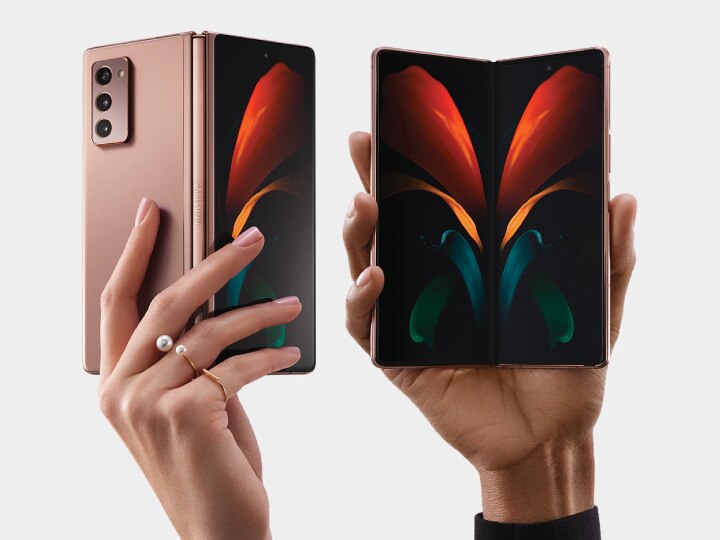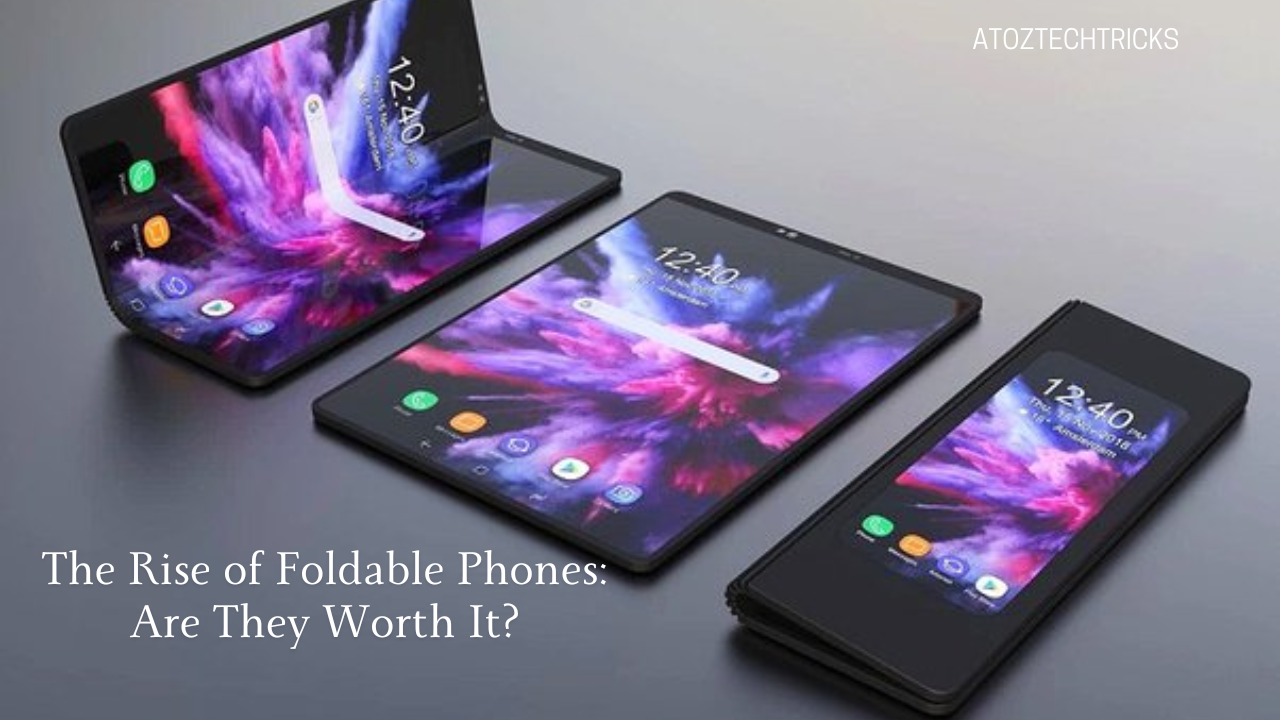In the ever-evolving world of technology, few innovations have sparked as much excitement and debate as the rise of foldable phones. These devices, which combine the functionality of smartphones with the flexibility of tablets, have captured the imagination of consumers and tech enthusiasts alike. But as with any emerging technology, the question remains: are they worth it? This article delves into the rise of foldable phones, exploring their advantages, challenges, and the prospects of this groundbreaking innovation.
The Evolution of Smartphones: A Brief Overview
Before diving into the specifics of foldable phones, it’s essential to understand the broader context of smartphone evolution. The smartphone industry has undergone several significant transformations since the launch of the first iPhone in 2007. From touchscreens to high-resolution cameras, the emphasis has consistently been on improving user experience through innovation.
However, as smartphone technology matured, the pace of groundbreaking innovations slowed. Incremental updates in processing power, camera quality, and battery life became the norm. This plateau in innovation created a demand for something truly revolutionary—something that could reignite the excitement that surrounded the early days of smartphones. Enter foldable phones.
The Concept of Foldable Phones
Foldable phones are a product of years of research and development in flexible display technology. The idea is simple yet revolutionary: a device that can be folded to fit in your pocket like a regular smartphone but can be unfolded to reveal a larger display, akin to a tablet. This dual functionality offers a significant advantage in terms of portability and versatility, making foldable phones a compelling proposition.
The concept of foldable phones is not entirely new. The first clamshell phones in the early 2000s, like the Motorola Razr, were a precursor to today’s foldable devices. However, the current generation of foldable phones takes this concept to a whole new level, thanks to advancements in flexible OLED (Organic Light-Emitting Diode) technology, which allows screens to bend without breaking.

Key Players in the Foldable Phone Market
Several major tech companies have entered the foldable phone market, each bringing its unique approach to this emerging technology. Among the key players are Samsung, Huawei, Motorola, and more recently, Google and Microsoft.
Samsung Galaxy Fold and Z Series
Samsung has been at the forefront of the foldable phone revolution, with its Galaxy Fold and later the Galaxy Z series. The Galaxy Fold, released in 2019, was one of the first commercially available foldable smartphones. While it faced initial criticism for durability issues, Samsung quickly addressed these concerns in subsequent models, refining the design and functionality.
The Galaxy Z Fold and Z Flip series have since become Samsung’s flagship foldable devices. The Z Fold is designed to offer a full-sized smartphone experience when folded and a tablet-like experience when unfolded. The Z Flip, on the other hand, takes a different approach with a clamshell design, offering a compact form factor that flips open into a standard smartphone size.
Huawei Mate X and Mate Xs
Huawei, another major player in the smartphone industry, introduced its foldable phone, the Mate X, in 2019. Unlike Samsung’s inward-folding design, the Mate X features an outward-folding display. This design choice offers a larger screen area when the device is folded but also raises durability concerns, as the screen is more exposed to potential damage.
The Mate Xs, a refined version of the Mate X, addressed some of the initial concerns with better build quality and enhanced software integration. However, Huawei’s foldable phones have been somewhat limited in global reach due to the company’s ongoing issues with the US government, affecting its ability to access essential Google services.
Motorola Razr
The Motorola Razr, a modern take on the iconic flip phone, brought a wave of nostalgia to the foldable phone market. Launched in 2020, the new Razr combined the classic clamshell design with a foldable OLED display. The device was praised for its compact size and unique design, but it faced criticism for its high price and limited battery life.
Despite these challenges, the Razr has carved out a niche for itself among consumers who value its design and form factor. Motorola has since released updated versions with improved durability and performance, continuing to cater to this segment of the market.
Google and Microsoft
More recently, Google and Microsoft have entered the foldable phone market with the Pixel Fold and Surface Duo, respectively. Google’s Pixel Fold aims to bring the company’s software expertise to the foldable market, offering a seamless integration of Android with a foldable form factor. Microsoft’s Surface Duo, while technically a dual-screen device rather than a foldable, explores the potential of multitasking with two separate displays.
These entries from Google and Microsoft highlight the growing interest in foldable technology, not just as a hardware innovation but as a new way to interact with software and multitask on mobile devices.
Advantages of Foldable Phones
Foldable phones bring several significant advantages that have contributed to their rise in popularity. These advantages revolve around the device’s flexibility, multitasking capabilities, and potential for enhanced user experience.
1. Versatility and Flexibility
One of the most significant advantages of foldable phones is their versatility. These devices can function as both a smartphone and a tablet, providing users with the best of both worlds. When folded, a foldable phone fits comfortably in your pocket, making it as portable as any other smartphone. When unfolded, it offers a larger screen that’s ideal for media consumption, gaming, and productivity tasks.
This dual-functionality appeals to users who want the convenience of a smartphone with the added benefits of a larger screen. For instance, watching videos, reading, or working on documents is much more comfortable on a foldable phone’s larger display than on a standard smartphone screen.
2. Enhanced Multitasking
Foldable phones also excel at multitasking. The larger unfolded screen allows users to run multiple apps side by side, significantly enhancing productivity. This feature is particularly useful for professionals who need to manage emails, documents, and other tasks simultaneously.
For example, Samsung’s Galaxy Z Fold series allows users to open up to three apps simultaneously on the main screen. This capability is a game-changer for users who need to switch between tasks quickly without constantly minimizing and maximizing apps.
3. Improved Gaming and Media Experience
Another area where foldable phones shine is in gaming and media consumption. The larger screen size provides a more immersive experience, making games and videos more enjoyable. For gamers, the added screen real estate means more space for controls and better visibility of in-game details.
Similarly, watching movies or streaming videos on a foldable phone’s large screen offers an experience closer to that of a tablet, making it ideal for entertainment on the go.
4. Future-Proofing
Foldable phones represent the cutting edge of mobile technology, and investing in one can be seen as future-proofing your device usage. As more developers optimize their apps for foldable screens and more companies enter the foldable market, the ecosystem around these devices is expected to grow.
Early adopters of foldable phones may benefit from being ahead of the curve, enjoying new features and capabilities as they become mainstream.
Challenges and Drawbacks of Foldable Phones
While foldable phones offer numerous advantages, they also come with several challenges and drawbacks that potential buyers should consider.
1. High Cost
One of the most significant barriers to the widespread adoption of foldable phones is their high cost. The technology behind foldable screens is still relatively new and expensive to produce, resulting in a hefty price tag for consumers. For example, the Samsung Galaxy Z Fold 5, one of the most popular foldable phones, retails for around $1,799, making it significantly more expensive than traditional smartphones.
This high cost can be a deterrent for many consumers, especially when considering that foldable phones may not yet offer a substantial enough improvement in functionality to justify the price difference.
2. Durability Concerns
Durability is another major concern with foldable phones. The flexible displays used in these devices are more fragile than the rigid glass screens found on traditional smartphones. Issues such as screen creases, hinge wear, and susceptibility to dust and debris have been reported by early adopters.
While manufacturers like Samsung and Huawei have made significant strides in improving the durability of their foldable phones, these devices still require more careful handling than standard smartphones. For consumers who prioritize durability, this could be a significant drawback.
3. Software Optimization
Foldable phones introduce unique software challenges. While the hardware is innovative, software optimization for foldable screens is still in its early stages. Not all apps are designed to take full advantage of the larger screen size, leading to inconsistent user experiences.
For instance, some apps may not scale correctly when the phone is unfolded, or they may not support multitasking features. As the foldable phone market grows, more developers will likely optimize their apps for these devices, but for now, software compatibility can be hit or miss.
4. Battery Life
Battery life is another area where foldable phones face challenges. The larger screens on these devices consume more power, and the need to fit the battery into a foldable form factor can limit its capacity. While manufacturers are working to improve battery life in foldable phones, many models still struggle to last as long as their traditional counterparts on a single charge.
For users who rely on their phones throughout the day without frequent access to charging, this could be a significant inconvenience.
The Future of Foldable Phones
Despite the challenges, the future of foldable phones looks promising. As technology advances and more manufacturers enter the market, we can expect several trends and developments that will shape the evolution of foldable devices.
1. Lower Costs
One of the most significant barriers to entry for foldable phones is their high cost. However, as the technology behind foldable displays matures and economies of scale come into play, prices are expected to decrease. This will make foldable phones more accessible to a broader range of consumers, potentially driving mass adoption.
In addition, competition among manufacturers will likely lead to more affordable models. As companies like Xiaomi and Oppo enter the foldable phone market, they may introduce devices that offer similar features at a lower price point, putting pressure on established brands to reduce their prices.
2. Improved Durability
Durability concerns have been a significant issue for foldable phones, but manufacturers are continuously working to address these challenges. Advances in materials science, such as the development of more robust flexible glass and improved hinge mechanisms, will likely lead to more durable foldable phones in the future.
In addition, companies are exploring new form factors that could enhance durability. For example, some manufacturers are working on rollable phones, where the screen rolls up into the device rather than folding. This design could potentially reduce wear and tear on the screen and hinge, offering a more durable alternative to current foldable designs.

3. Enhanced Software Experience
As the foldable phone market grows, software developers will continue to optimize their apps for these devices. This will lead to a more seamless user experience, with apps that fully utilize the larger screen size and multitasking capabilities of foldable phones.
In addition, operating systems like Android are likely to introduce more native support for foldable devices, further improving the software experience. This will make foldable phones more user-friendly and better suited for a wide range of tasks, from productivity to entertainment.
4. Integration with Other Technologies
The future of foldable phones may also involve integration with other emerging technologies, such as 5G, augmented reality (AR), and artificial intelligence (AI). For example, foldable phones with larger screens are ideal for AR applications, offering a more immersive experience.
In addition, the increased processing power and multitasking capabilities of foldable phones could make them an essential tool for AI-driven applications, such as advanced voice assistants and real-time language translation.
Are Foldable Phones Worth It?
So, are foldable phones worth the investment? The answer depends on your specific needs and priorities as a consumer.
If you value cutting-edge technology, versatility, and the ability to multitask on a larger screen, a foldable phone could be a worthwhile investment. These devices offer a unique combination of smartphone portability and tablet functionality, making them ideal for users who want the best of both worlds.
However, if cost, durability, and software optimization are major concerns for you, it may be worth waiting for the next generation of foldable phones. As the technology continues to mature, we can expect more affordable, durable, and user-friendly foldable devices to hit the market.
The Evolution of Virtual Reality: Must-Have VR Gadgets for 2024
In conclusion, foldable phones represent an exciting innovation in the smartphone industry, offering a glimpse into the future of mobile technology. While they are not without their challenges, the potential benefits of foldable phones are significant, and they are likely to become an increasingly important part of the tech landscape in the years to come. Whether or not they are worth it depends on how much you value the cutting-edge features they offer and your willingness to invest in a technology that is still in its early stages of development.



